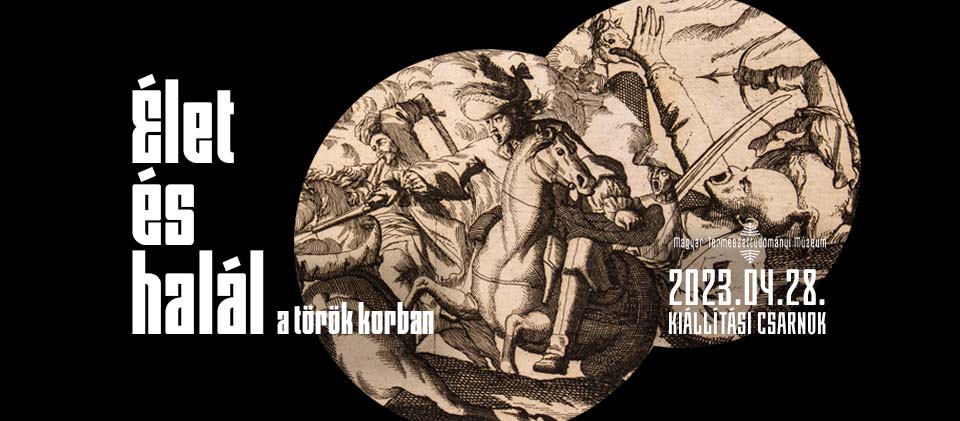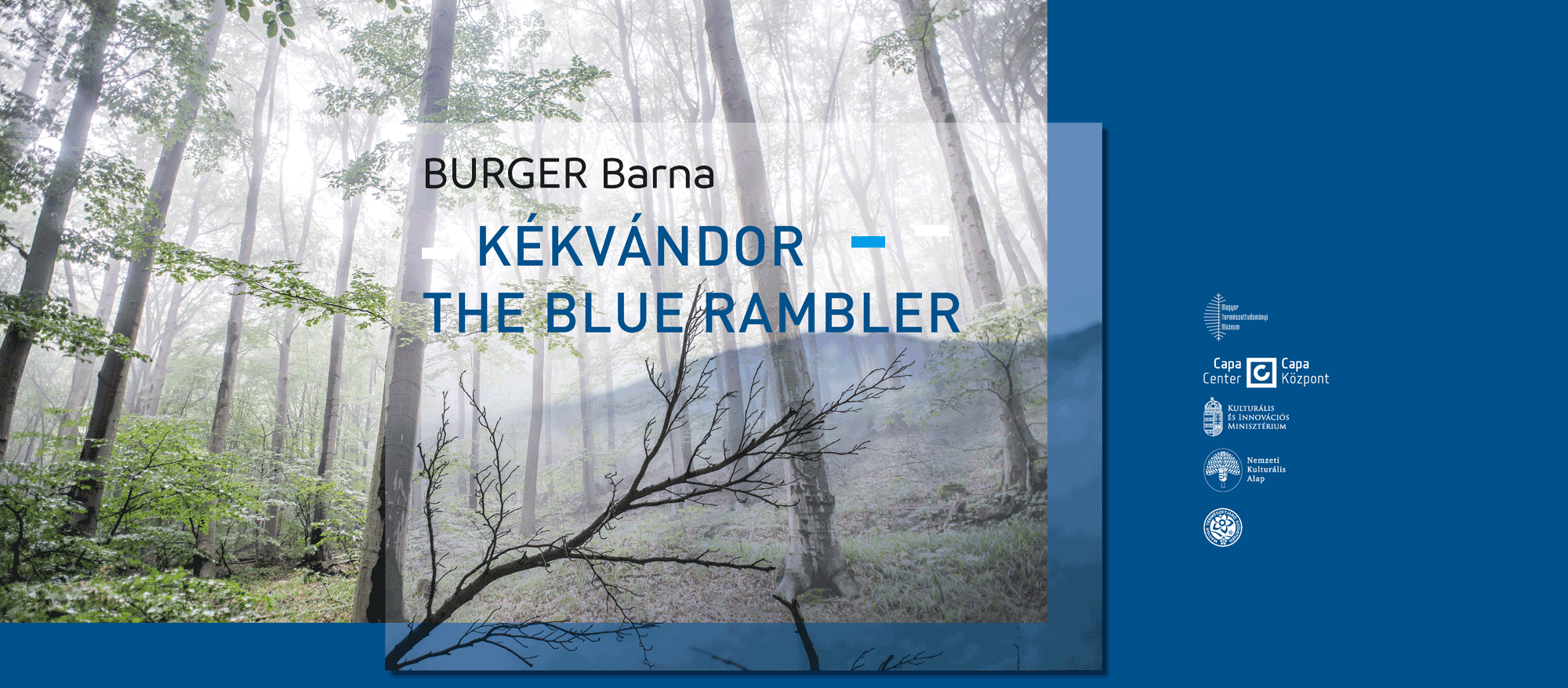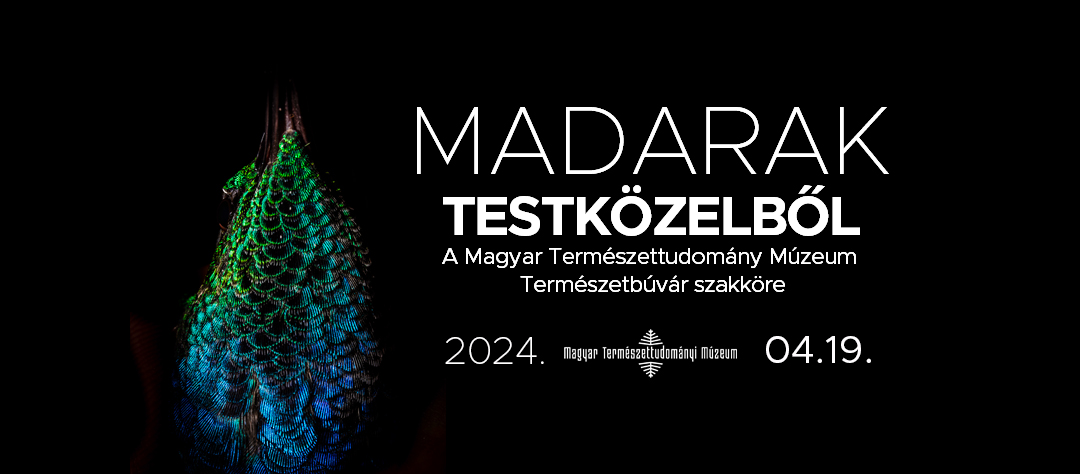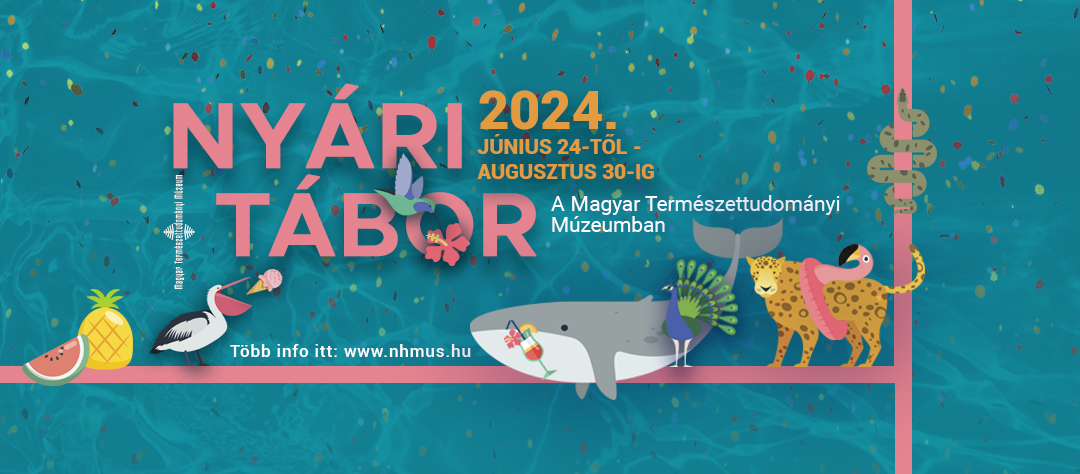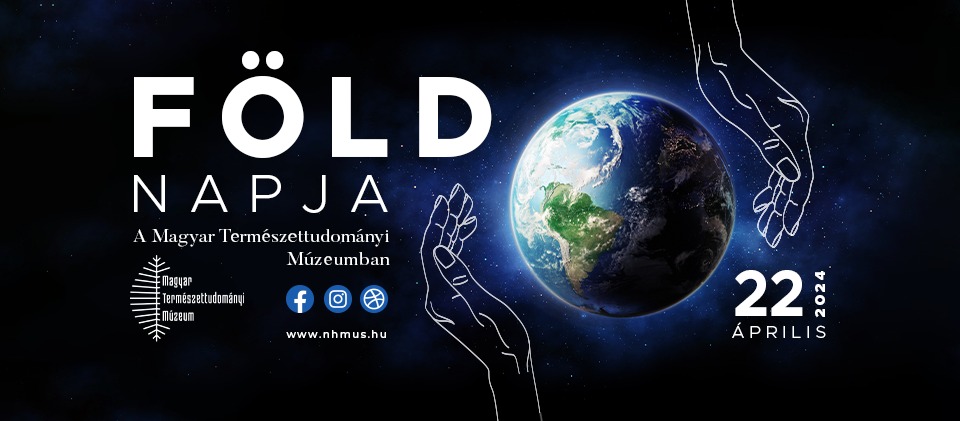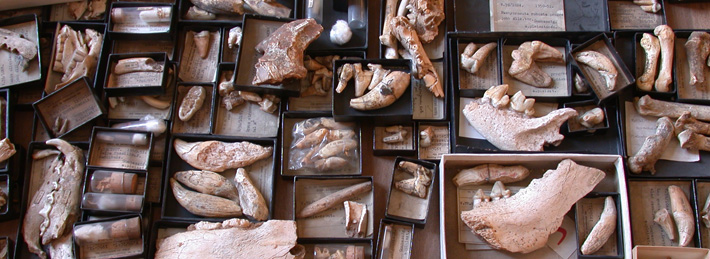
The Vertebrate Palaeontological Collection houses specimens representing the whole geological time scale. Fossils from the Pliocene and Pleistocene localities in Hungary make up the largest and most valuable part of the collection. Apart from them vertebrate remains from Germany and Italy are also significant. Collection specimens are catalogued individually and type specimens are stored and catalogued separately from other collection units.
Staff
Curator: Mihály Gasparik
Preparator: Henriett Acsai
Collection size
Total number of specimens: 20,000
Type taxa: 205
Type specimens: 602
Remarkable collections
Palaeozoic fish collection
Outstanding pieces are the Mansfeld copper slate of the geologic period Permian and the original fossil of Drepanaspis (primitive jawless fish) of Devon, which is also the oldest, therefore the most valuable item of our Vertebrate Collection.
Triassic vertebrate material from Templom Hill of Villány
The classical Triassic outcrop at the Templom Hill in Villány is the second systematically collectible Mesozoic vertebrate locality in Hungary after Iharkút. As a result of recent excavations, hundreds of Triassic vertebrate specimens (cartilaginous and bony fishes, nothosaurs, placodonts) were added to the collection. There are some very important fossils, for example a fragmentary nothosaurian lower jaw with teeth (VER 2013.1.), more precise taxonomic assignment of which is in progress.
Jurassic marine vertebrates
The most remarkable fossils are the ancestral vertebrates, which originate from Germany: the Early Jurassic crocodiles (Crocodyliformes) and ichthyosaurs from Holzmaden and the Late Jurassic pterosaurs from Solnhofen.
Our collection preserves several interesting specimens that are considered to be excellent exhibits.
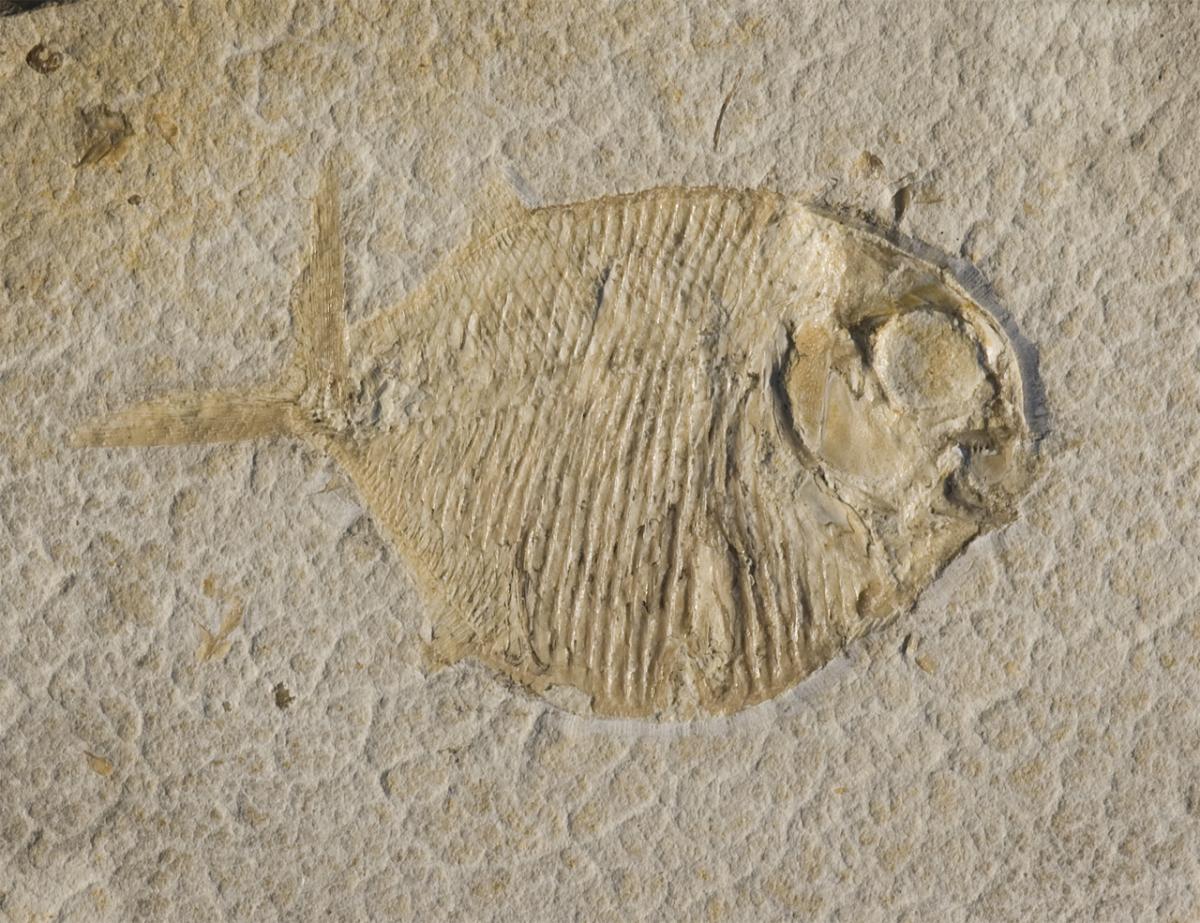
Gyrodus genus, late jurassic, Solnhofen
Iharkút Late Cretaceous vertebrates
The Iharkút Late Cretaceous site is the first systematically collectible vertebrate locality of the Mesozoic Era of Hungary. Studies have revealed a diverse and unique 85 million years old fauna of at least 35 species.
There are several new species or genera, type materials of which are retained in our Department. In addition to the type materials, we preserve thousands of catalogued bones.
The described species, types of which we have in our collection are the followings:
- Anura: Bakonybatrachus fedori V 2010.283.1., Hungarobatrachus szukacsi V 2008.16.1.
- Testudines: Foxemys trabanti V 2010.86.1.
- Squamata: Pelsochamops infrequens 2006.106.1., Distortodon rhomboideus PAL 2012.31.1., Pannoniasaurus inexpectatus PAL 2011.43.1.
- Crocodylia: Iharkutosuchus makadii 2006.52.1.
- Dinosauria: Ajkaceratops kozmai V 2009.192.1., Hungarosaurus tormai 2007.26.1.–2007.26.34., 2007.89.1., 2007.89.2., Mochlodon vorosi V 2010.105.1., Pneumatoraptor fodori V 2008.38.1.
- Aves: Bauxitornis mindszentyae V 2009.38.1.
- Pterosauria: Bakonydraco galaczi 2007.110.1.
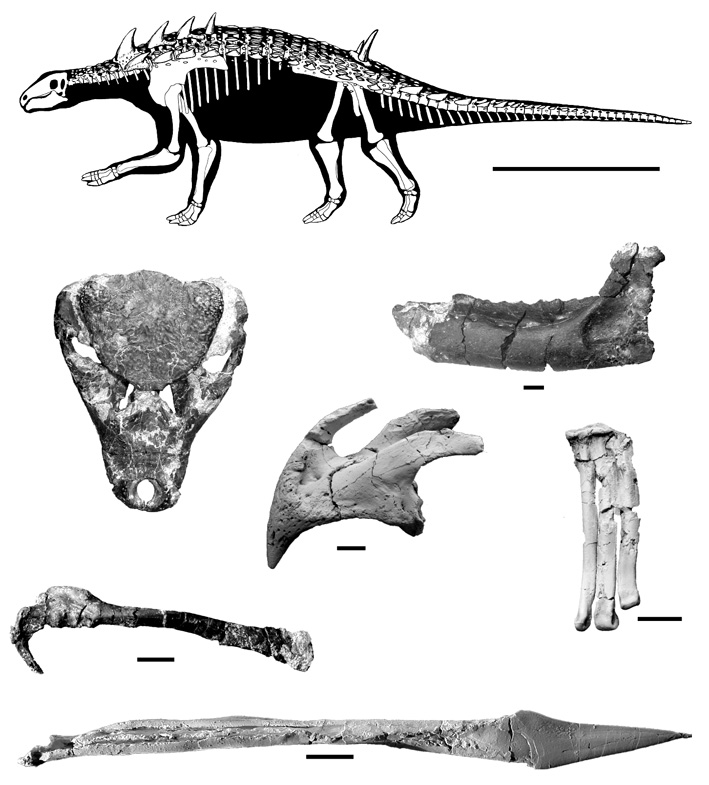
Eocene reef fish
The world famous Italian Monte Bolca site hides one of the oldest reef fish communities of the Earth. Sedimentary strata deposited in a once tropical shallow sea preserving such fish fauna like the one that lives at the reefs of the Indian Ocean. The majority of the collection items got to our Museum by the patron Andor Semsey.
Kormos Collection
In this Pliocene and Pleistocene vertebrate material, collected by Tivadar Kormos in the first third of the 1900s, we retain specimens that have significant evolutional and stratigraphic importance for research. The fossils, several of which are types, stem from sites as Villány, Beremend, Nagyharsány, Betfia, Pilisszántó, that posess stratigraphic basic fauna.
Pleistocene Vertebrate Basic Faunas
The richest part of the Vertebrate Collection consists of the Pleistocene vertebrates. Our Museum obtained a significant amount of them by collecting activities of Dénes Jánossy, a former director of the Department. We preserve material from essential sites of the vertebrate stratigraphy of the Quaternary Period. Some localities (e.g. Vértesszőlős and Istállóskő ) are world-famous from an anthropological point of view. In addition, we have remarkable Early Pleistocene fauna of Osztramos and Somssich Hill, Middle Pleistocene fauna of Tarkő and Late Pleistocene fauna of Süttő and Varbó (Kálmán Lambrecht Cave).
Availability
The collection is open for visitors by appointment only.
Most collection materials are available scientific examination for external researchers.
To discuss your requests please contact our curator: gasparik@nhmus.hu
On-site examination
Terms and Conditions (PDF)
Research permit form (DOC)
